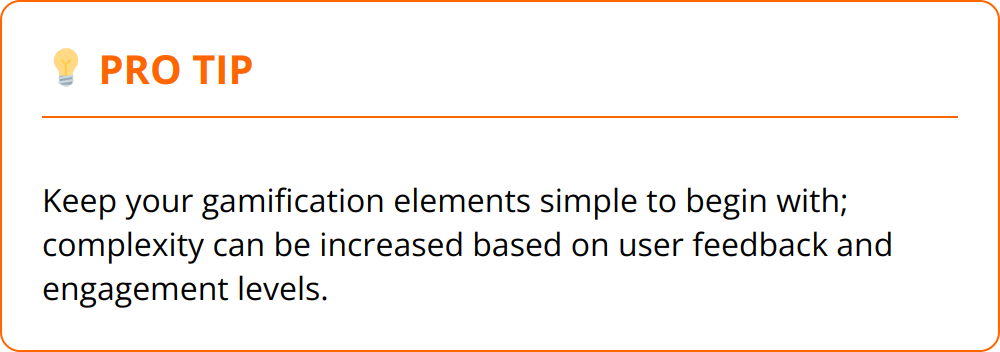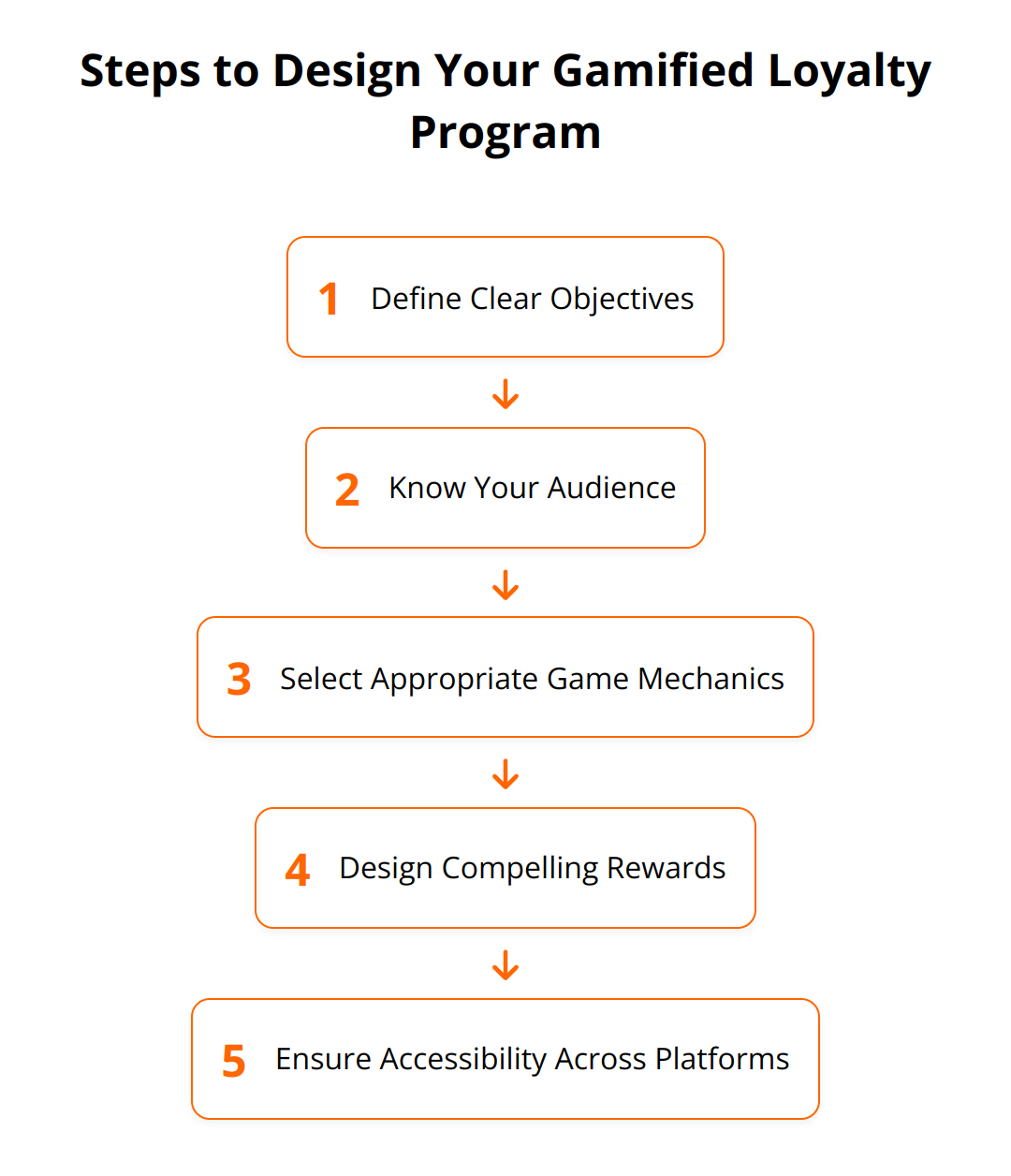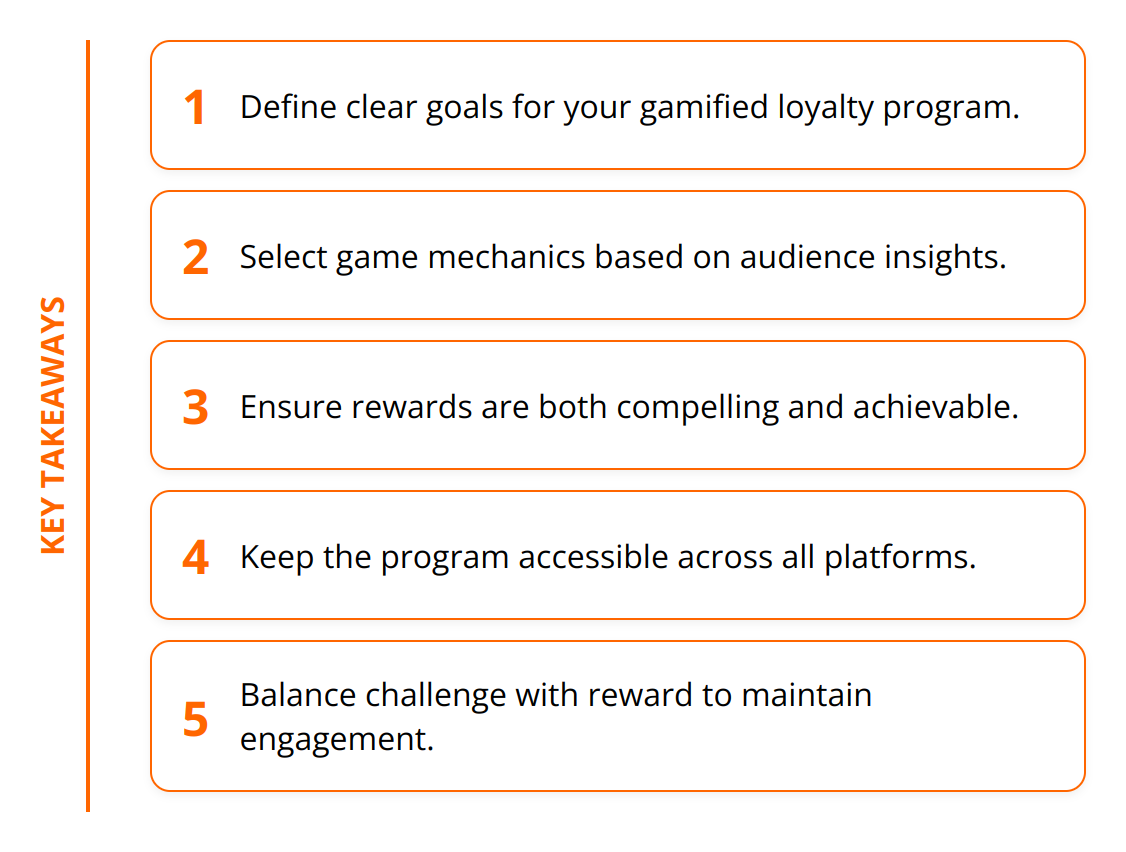
We at Reward the World understand the transformative power of gamified loyalty solutions in today’s competitive market. They aren’t just about rewarding customers; they’re about creating a memorable experience that fosters loyalty and drives engagement. In this post: Gamified Loyalty Solutions: What You Need to Know, we’ll explore the nuts and bolts of gamified loyalty programs, from their psychology to their implementation. Prepare to learn how these innovative programs can propel your business forward.
Why Gamified Loyalty Works
Gamified loyalty solutions are transforming the way businesses engage with their customers, turning every interaction into an opportunity for engagement. The key to their effectiveness lies in the unique combination of game mechanics and loyalty principles. By understanding the essential elements of a gamified loyalty program and the psychology that drives their success, businesses can create experiences that resonate deeply with customers.
Essential Elements of a Gamified Loyalty Program
The foundation of a successful gamified loyalty program rests on several key components. Rewards are at the heart of any loyalty program, but in a gamified context, they must be both compelling and achievable. Challenges and Milestones keep participants engaged, providing them with goals to strive for. Leaderboards and Badges create a sense of community and competition, encouraging customers to engage more deeply. For these elements to work harmoniously, Personalization is vital, tailoring the experience to fit individual user preferences and behaviors.
Gamification brings a dynamic experience to loyalty programs. Incorporating elements like time-bound challenges or levels can significantly increase participation rates. Importantly, the gamified program must offer a smooth user experience across devices, ensuring accessibility and convenience for all participants.
The Psychology Behind Gamification
Understanding the psychological triggers that gamification activates is fundamental. Humans are naturally drawn to games due to their elements of competition, achievement, and social interaction. Gamification taps into these inherent desires, making routine transactions exhilarating. The thrill of completing a challenge or climbing up a leaderboard leverages the endorphin rush associated with gaming, translating this into brand loyalty and increased engagement.
Moreover, personalized rewards make customers feel valued on an individual level, enhancing their emotional connection with the brand. The anticipation of earning these rewards can motivate customers to make repeated purchases, turning sporadic buyers into loyal customers.

Practical Tips for Implementing Gamified Loyalty Solutions
- Always start with a clear goal for what you want to achieve with your gamified loyalty program, whether it’s increasing purchase frequency, boosting engagement, or something else.
- Test different game mechanics to see what resonates best with your audience. A/B testing can reveal valuable insights into user preferences and program effectiveness.
- Utilize data analytics to continuously refine and personalize the gamified experience. Understanding customer behavior and preferences allows for more targeted and effective engagement strategies.
- Maintain a balance between challenging and achievable rewards to keep customers motivated without causing frustration.

Gamification in loyalty programs is not just a trend; it’s a proven strategy for enhancing customer engagement and loyalty. By creating a fun and interactive experience, businesses can differentiate themselves in a crowded market, forge stronger relationships with their customers, and ultimately drive growth. For insights on personalizing your loyalty program, consider exploring personalized rewards strategies.
Preparing for the future of customer engagement means understanding and applying the principles of gamified loyalty solutions. By doing so, businesses can unlock the potential of every customer interaction, transforming routine transactions into memorable experiences that encourage loyalty and advocacy.
Boosting Engagement with Gamification
Gamified loyalty programs offer a powerful way to engage and retain customers. By integrating game mechanics into loyalty strategies, businesses can create more compelling, interactive experiences that go beyond traditional reward systems. This approach can lead to increased customer activity, stronger brand loyalty, and a deeper understanding of customer preferences.

Elevate Customer Engagement and Retention
Businesses aiming for long-term success know the importance of keeping customers engaged and loyal. Gamified loyalty programs make interactions more enjoyable, encouraging customers to return and participate repeatedly. For instance, a simple point collection game can motivate customers to make more purchases or visit a website regularly to check their progress. These activities not only increase sales but also strengthen the emotional connection between customers and the brand.
Strengthening Brand Awareness and Loyalty
When executed correctly, gamified elements can significantly enhance brand awareness and loyalty. Creative and enjoyable game design captures attention and can quickly turn customers into brand advocates. A memorable gamified experience makes customers more likely to share their achievements on social media, expanding brand reach organically. It’s a dynamic way to create brand ambassadors who share their positive experiences with friends and family, ultimately leading to a more engaged and loyal customer base.

Harnessing Customer Data for Insights
One of the most significant advantages of gamified loyalty programs is the wealth of customer data they can generate. Every interaction provides insights into customer preferences, behavior, and engagement levels. With this data, businesses can tailor their offerings and communications more effectively, creating a more personalized customer experience. Analyzing trends from gamification efforts can reveal what motivates customers, which rewards are most coveted, and how engagement can be improved.
For practical implementations of this strategy, leveraging technology is key. Advanced analytics tools can disaggregate data to offer actionable insights, enabling businesses to fine-tune their gamified loyalty programs for optimal engagement. Offering rewards that resonate with your audience and challenging them in fun, achievable ways are essential steps in maintaining an attractive loyalty program. Furthermore, personalizing experiences based on customer data can transform casual buyers into devoted fans.
In summary, gamified loyalty programs are not just about adding a layer of entertainment. They are a strategic approach to driving engagement, enhancing brand loyalty, and gathering crucial customer data. By making loyalty fun and rewarding on a deeper level, businesses can foster a more active and committed customer base.
For more insights on creating effective reward programs, explore reward program design tips.
Designing Gamified Loyalty Programs
Implementing a gamified loyalty program requires a strategic approach. By focusing on creating an engaging, dynamic, and rewarding experience, businesses can significantly increase customer retention, loyalty, and overall engagement. Follow these steps and best practices to ensure the success of your gamified loyalty program.
Steps to Design Your Program
- Define Clear Objectives: Before anything else, it’s vital to determine what you hope to achieve with your gamified loyalty program. Whether it’s to increase repeat sales, enhance customer engagement, or gather actionable data, having a clear goal will guide all subsequent decisions.
- Know Your Audience: Different audiences will respond to different types of games and rewards. Conduct market research or analyze your existing customer data to understand their preferences, interests, and motivations.
- Select Appropriate Game Mechanics: Based on your objectives and audience insights, choose game elements that will most effectively drive participation. Options might include points scoring, achievements, leaderboards, or completing challenges to unlock rewards.
- Design Compelling Rewards: Rewards should be valuable and relevant to your customers. They can range from discounts and special offers to exclusive content or experiences. Remember, the motivation to participate heavily relies on the appeal of the rewards.
- Ensure Accessibility Across Platforms: Your program must be easily accessible and provide a seamless experience across all devices – mobile, desktop, and in-store if applicable.
- Implement, Test, and Iterate: Launch your program with a segment of your audience to gather feedback and make necessary adjustments before a wider rollout. Continuously analyze program performance and optimize based on customer behavior and feedback.

Best Practices for Success
- Balance Challenge and Reward: Ensure challenges are engaging but not overly difficult to complete. The rewards must justify the effort, or participation will dwindle.
- Keep It Fresh: Regularly update the challenges and rewards to maintain interest and encourage continuous engagement. Seasonal or themed campaigns can add a layer of excitement and novelty.
- Promote Social Sharing: Encourage participants to share their achievements and progress on social media. This not only increases engagement but also serves as organic promotion for your program and brand.
- Leverage Data for Personalization: Use data analytics to tailor the gamified experiences and rewards to individual users. Personalization enhances the user experience and increases program effectiveness.
Common Pitfalls and Tips to Avoid Them
- Complicated Mechanics: Avoid making your program too complex. If participants don’t understand how to earn rewards or what they’re working towards, engagement will suffer.
- Ignoring User Feedback: Pay attention to the feedback from your participants. Ignoring it can lead to decreased satisfaction and participation.
- Not Aligning with Brand Values: Ensure your gamified loyalty program aligns with your brand’s values and message. Inconsistencies can confuse customers and dilute brand identity.
- Failing to Promote the Program: Don’t assume customers will find your program on their own. Use all available channels to promote it – email campaigns, social media, and on your website.
For insights on leveraging technology to enhance your gamified loyalty program, see incentive program analytics.
By following these steps and practices, businesses can create gamified loyalty programs that not only increase customer engagement and retention but also provide valuable insights for further personalization and optimization efforts.
Final Thoughts
Gamified loyalty solutions represent a significant evolution in customer engagement strategies, incorporating game mechanics and loyalty principles to create a memorable experience that fosters loyalty and drives engagement. We’ve explored how these solutions leverage human psychology, tapping into our innate desires for competition, achievement, and social interaction, thereby turning routine transactions into exhilarating experiences. By implementing gamified loyalty solutions, businesses can elevate customer engagement, strengthen brand loyalty, and gain valuable insights through data analytics.

The future of gamified loyalty solutions looks incredibly promising. With advancements in technology and a deeper understanding of customer behavior, we expect these programs to become even more personalized, engaging, and effective. The integration of AI and machine learning algorithms will allow for a level of personalization previously unattainable, offering customers rewards and challenges that are uniquely suited to their preferences and behaviors.
We at Reward the World believe in the power of gamified loyalty solutions to transform customer engagement. Our platform, designed to elevate customer engagement and boost company performance, offers a wide range of rewards and an unparalleled user experience. With our seamless integration, robust analytics, and GDPR compliance, we’re poised to help businesses unleash the full potential of their gamified loyalty programs.
We encourage businesses to explore gamified loyalty programs and embrace the future of customer engagement. By fostering a deeper connection with your customers and creating experiences that resonate, you can unlock a new level of loyalty and advocacy for your brand. For more information and to get started, visit Reward the World.
In summary, the journey to creating a successful gamified loyalty program involves:
- Understanding the psychology behind gamification and its impact on customer behavior.
- Implementing key elements such as challenges, rewards, and personalization.
- Leveraging technology to gain insights, enhance customer experience, and ensure accessibility across devices.
The adventure into gamified loyalty solutions is an opportunity for your business to stand out, create memorable experiences, and build a loyal community around your brand. We hope you found this article: Gamified Loyalty Solutions: What You Need to Know.
